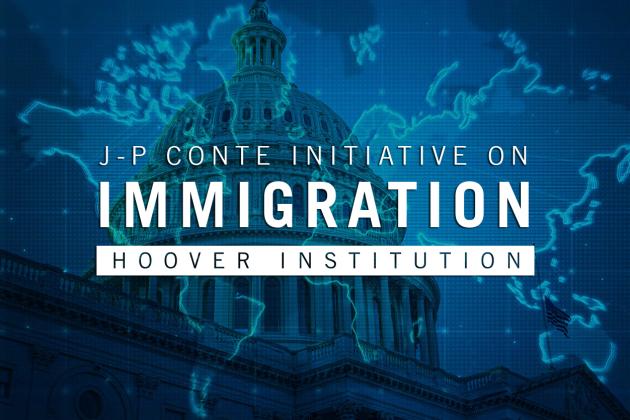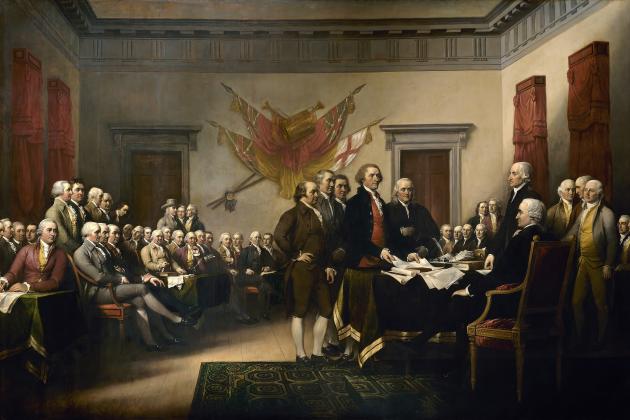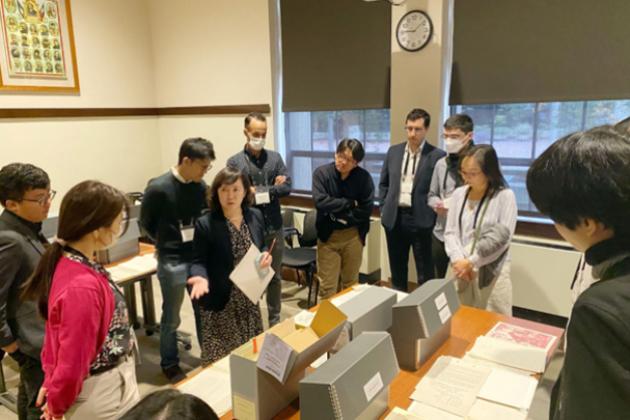Considerable controversy over the Federal Reserve’s performance leading up to and during the financial crisis of 2007-2008, the Great Recession of 2007-2009 and the current slow recovery, provided the background for a symposium held at the Hoover Institution, Stanford University on January 13, 2012. Present at the meeting were: Michael Bordo, Andrew Crockett, Joe Grundfest, John Gunn, Robert Hall, Stephen Langlois, Allan Meltzer, Ken Scott, John Shoven, George Shultz, John Taylor, Carl Walsh and Ian Wright.
The discussion began with presentations by George Shultz, Michael Bordo, Allan Meltzer and John Taylor. The presentations and the discussion which accompanied them stressed four salient themes: (1) The importance of the Fed having its sole mandate as maintaining long-run price stability;(2) The imperative of having the Fed follow a credible and enforceable rule to maintain price stability; (3) The importance of the Fed’s implementation of this rule being accountable to the Congress; ( 4)The importance of restoring the Fed’s independence from the fiscal authorities as soon as possible.
The presentations
-
George Shultz, “The Importance of Having an Economic Strategy: Examples from the Reagan Administration”
In his remarks at the Symposium, George Shultz, based on his long experience in public service, stressed three guiding principles for the Federal Reserve: 1. “ to say less” to avoid giving conflicting messages. In this regard he contrasted William McChesney Martin’s few and careful remarks with those of the current Fed chairman; 2. Being willing to work for the long-term; 3. That successful reform at the Fed needs a good chairman to do it and a favorable political environment to provide support . He gave the example of how Ronald Reagan ensured that his government provided support to Paul Volcker in his successful anti-inflation policy in the early 1980s.
As background to the discussion George Shultz discussed a memorandum prepared in November 1980 for incoming President Reagan by his Coordinating Committee on Economic Policy in November 1980. At that time the key policy issues were: to restore price stability and end the Great Inflation (during the Great Inflation from 1965 to 1981 CPI inflation had risen to a peak in 1980 of 15%); stimulate growth; and build up defense. The key guiding principle to be followed was “the need for a long-term view point … to allow for the time, coherence and predictability necessary for success.” The Committee’s prescription to restore price stability was for the Fed to maintain” a steady and moderate rate of monetary growth”. The Fed was to set annual target growth rates for the money supply for the next five years and it was to be accountable to the President and the Congress for its actions. The administration would” propose fiscal policies compatible with [the Fed’s goal] to eliminate inflation.”
-
Michael Bordo “Could the U.S. Have Had a Better Central Bank: An Historical Counterfactual Speculation”.
To provide background for the discussion on monetary reform, Michael Bordo asked whether the Fed’s track record could have been improved upon if instead of having the Fed, the U.S had an alternative central bank based on two historical institutions which were not adopted: (1) the Second Bank of the United States, and (2) the central bank proposed in the Warburg Plan of 1910. He posited that if the Second Bank had not been destroyed by Andrew Jackson in 1836 that the U.S. would have avoided much of the financial instability of the nineteenth century. As President of the Second Bank, Nicholas Biddle had developed the best practice tools of monetary policy. He would have learned to be an effective lender of last resort and he would have followed the gold standard convertibility rule to maintain long-term price stability. This would have obviated the need to create the Fed. Moreover had the Second Bank survived then the Great Depression could have been avoided because the Bank would not have followed the flawed real bills doctrine that the Fed did, and it would have provided ample liquidity to the money market to prevent the banking panics. Had the Great Depression not happened then the monetary history of the rest of the twentieth century would have been very different.
Paul Warburg, a member of the National Monetary Commission, made the case in 1910 for the U.S. to adopt a European style central bank to provide liquidity to back up the market for banker’s acceptances and serve as lender of last resort in times of financial stringency. The Federal Reserve Act in 1913 left out Warburg’s prescription that the central bank should follow Bagehot’s rule to prevent panics from occurring. It also did not address the possibility of shocks coming from outside the banking system, it denied access to the discount window by non member banks, and greatly limited the collateral eligible to be rediscounted. The Fed’s discount window policy failed to allay the banking panics of the 1930s which Warburg’s plan would have prevented hence avoiding the Great Depression.
Both hypothetical central banks were based on adhering to the gold standard and had the Great Depression been avoided it would have lasted until the 1960s when it would have been transformed into a fiat regime with credibility. Absent the Great Depression , we wouldn’t have had Keynesian economics and the Phillips curve policy tradeoff. The US central bank would have adhered to a stable nominal anchor like Switzerland and Germany. In sum, either counterfactual central bank would have given better financial stability and overall macroeconomic performance than the Fed delivered.
The reasons for the hypothetical success of the two counterfactual central banks would have been: (1) adherence to a credible nominal anchor; (2) following a Bagehot’s rule type lender of last resort policy; (3) independence from the fiscal authorities.
-
Allan Meltzer. “Federal Reserve Policy in the Great Recession”
Allan Meltzer criticized the Fed’s performance in the recent crisis for following often inconsistent short-term discretionary policies, a prime example of which was the decision to bail out Bear Stearns in March 2008 ,then let Lehman Brothers fail in September and then bail out AIG in the following week. These inconsistent policies greatly contributed to the financial crisis in the fall of 2008. The reasons why the Fed continues to focus on the near term according to him, include perceived political pressures and the influence of financial markets and financial commentators. The Fed’s short –term focus ignores the long-term consequences of such actions.
Meltzer is also critical of the Fed’s pursuit of its dual mandate to achieve both low inflation and high employment. The Fed, in the post war, has usually attempted first to reduce unemployment and then later dealt with inflation. Key exceptions to this approach were Paul Volcker and Alan Greenspan who believed that keeping inflation low would provide an environment for high unemployment. By contrast, the current chairman has justified the Fed’s use of Quantitative Easing because of his concern over high unemployment. Finally Meltzer is critical of the Fed for never stating its lender of last resort policy rule.
To rectify these ills, he makes the case for the Fed’s following a monetary policy rule and eschewing discretion and fine tuning. His preferred rule is an inflation target to be achieved by the Fed setting its policy interest rate based on a Taylor rule. Moreover he recommends that the Fed should be made accountable for its actions. Based on the rule, the Fed would announce in advance its actions to achieve the target inflation rate . If its actions later prove to be in error, the Chairman of the Fed would have to explain the reasons for the outturn to the Congress and as is the case in New Zealand be willing to offer his resignation.
Meltzer also favors an international extension of his rule—the U.S., Japan and the Eurozone would all target the same inflation rate and let their exchange rates freely float. Real international shocks would be accommodated by the exchange rate. Such a voluntary arrangement would give exchange rates greater stability.
Finally, to maintain financial stability Meltzer favors the Fed announcing a lender of last resort rule like Bagehot’s rule and also requiring banks to have capital requirements commensurate with their size.
-
John Taylor “Rules Work and Discretion Doesn’t “ From Chapter 4 of First Principles: Five Keys to Restoring America’s Prosperity
John Taylor like Allan Meltzer is critical of the dual mandate of low inflation and high employment imposed by the Congress on the Fed in 1977. Adherence to it worsened both inflation and real performance in the 1970s and , in the recent crisis and recession, it has compromised the Fed’s balance sheet and its independence from the fiscal authority. Unlike Paul Volcker and later Alan Greenspan, who interpreted the mandate as giving primacy to the goal of low inflation and who argued that achieving low inflation would also deliver low unemployment, the current chairman in the past five years has adhered strictly to the dual mandate. Taylor makes the case for getting rid of the dual mandate and having the Fed pursue the single goal of price stability, as has been done successfully in a number of advanced countries. Instead of having the Fed promote “ the goals of maximum employment, stable prices and moderate long-term interest rates” it should “ promote effectively long-run price stability within a clear framework of overall economic stability”. This mandate would have the Fed focus on long-term price stability and it would allow the Fed in the short-run to deal with recessions and to use lender of last resort policy in the event of a financial crisis.
To make this new mandate work the Fed would set its policy interest rate based on a rule (perhaps as a function of inflation and deviations of real growth from its trend, but it would be the responsibility of the Fed to decide the rule). Following such a rule would greatly reduce discretion. Taylor would not write such a rule into law but would amend the Federal Reserve Act to require that the Fed announce its policy rule for the interest rate and report on it to the Congress periodically in the way that it had to report on the growth rates of monetary aggregates before 2000. The Fed would not be required to follow the rule in every circumstance, but in its report on the performance of its rule it would need to explain significant departures from the rule and be accountable for them.
Finally he expressed concern over the large overhang of the monetary base which is now due mainly to the Fed’s policies of quantitative easing following its financial rescues and liquidity provisions in 2008. This overhang raises the specter of future inflation if it is unwound too slowly or a downturn if it is unwound too rapidly. To reduce this risk of the Fed’s balance sheet, the Fed should formulate a credible exit strategy.
Discussion
In the discussion that followed there was close to universal agreement on the need for monetary reform. This would encompass a long-run price level stability mandate for the Fed, the institution of a policy rule or strategy for setting the monetary policy instrument, and the need to restrict the scope of the Fed and restore its independence from the fiscal authority. Within this broad agreement there were also some differences. Allan Meltzer reiterated the case for following the New Zealand example of requiring the central bank governor to offer a letter of resignation when he missed the inflation target. Carl Walsh suggested that the policy rule be designed to operate both in normal times and during financial crises. To deal with crises the central bank should establish its lender of last resort policy ( e.g. Bagehot’s Rule) in advance.
A number of participants commented on the overhang in the monetary base. Andrew Crockett felt that it would be difficult for the Fed to restore its balance sheet to pre –crisis levels. Robert Hall was more sanguine than the others on the ability of the Fed to engineer a successful exit strategy without reducing the overhang. It would do so by adjusting the interest rate it pays on bank reserves. Michael Bordo expressed concern about inflation coming from an international channel reflecting capital outflows from the U.S. to emerging countries leading to global inflation and feedback to the U.S. through the current account.









